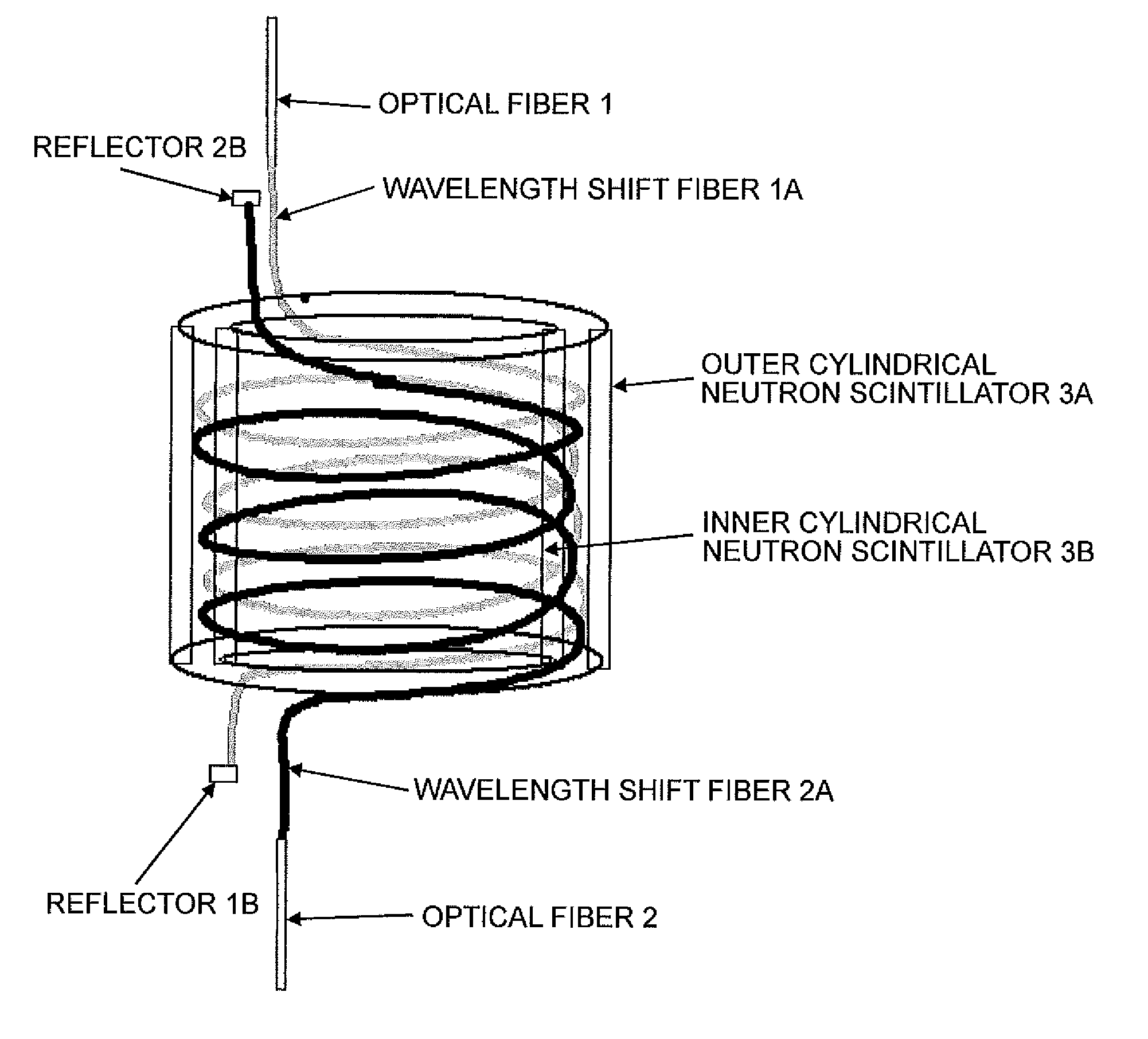Neutron detector
a neutron detector and detector technology, applied in the field of neutron detectors, can solve the problems of difficult to obtain sup>3, difficult to use it as a neutron image detector, and low neutron detection efficiency, so as to improve the neutron detection efficiency and high detection efficiency. , the effect of low sensitivity of zns to the gamma ray
- Summary
- Abstract
- Description
- Claims
- Application Information
AI Technical Summary
Benefits of technology
Problems solved by technology
Method used
Image
Examples
embodiment 2
[0065]Next, the neutron detector of other types is explained referring to FIG. 8. 32 neutron detecting elements are closely arranged in the cylinder for neutron detecting element arrangement. The space in the cylinder of the neutron detecting element is used as a conduit for optical fibers. Two optical fibers are led to two optical detectors, respectively, arranged on both sides of the cylinder for neutron detecting element arrangement. After the optical fibers which led out from each neutron detecting element is settled as a pair to form two set of optical fiber bunches, each fluorescence is detected by two optical detectors. The fluorescence signals converted into pulse signals by two optical detectors are led to a coincidence circuit. When two fluorescence signals are measured simultaneously during the predetermined period of time, a neutron signal is output.
[0066]When the high position resolution is not required, longer element is advantageous in the cost. Therefore, the length ...
embodiment 3
[0081]The neutron detector which performs one-dimensional detection of neutrons is explained based on Embodiment 3. 28 neutron detecting elements according to Embodiment 1 are arranged in close proximity to each other in the cylinder for neutron detecting element arrangement. Where, each neutron detecting element serve as a one-dimensional position detection body. The space in the cylinder of the neutron detecting element is used as a conduit for optical fibers. Two optical fibers are led to a multichannel optical detector, arranged on one side of the cylinder for neutron detecting element arrangement. Each fluorescence is detected by two optical detectors, using the optical fibers which led out from each neutron detecting element as a pair. The fluorescence signals converted into pulse signals by two optical detectors are led to a coincidence circuit. When two fluorescence signals are measured simultaneously during the predetermined period of time, a neutron signal is output.
[0082]...
embodiment 4
[0096]The neutron detector which performs one-dimensional detection of neutrons is explained based on Embodiment 4. 120 neutron detecting elements according to Embodiment 1 is arranged in close proximity to each other in the cylinder for neutron detecting element arrangement. Where, each neutron detecting element serves as a one-dimensional position detection body. The space in the cylinder for the neutron detecting element arrangement is used as a conduit for optical fibers. Two optical fibers led out from the neutron detecting element are led to a multichannel optical detector, arranged on one side of the cylinder for neutron detecting element arrangement. Two optical fibers from the neutron detecting element are connected optically with each optical detector of 16 channel optical detector based on the predetermined coding rule. The fluorescence emitted when the neutron is incident to the neutron scintillator and is captured therein is detected by two wavelength shift fibers, and ...
PUM
 Login to View More
Login to View More Abstract
Description
Claims
Application Information
 Login to View More
Login to View More - R&D Engineer
- R&D Manager
- IP Professional
- Industry Leading Data Capabilities
- Powerful AI technology
- Patent DNA Extraction
Browse by: Latest US Patents, China's latest patents, Technical Efficacy Thesaurus, Application Domain, Technology Topic, Popular Technical Reports.
© 2024 PatSnap. All rights reserved.Legal|Privacy policy|Modern Slavery Act Transparency Statement|Sitemap|About US| Contact US: help@patsnap.com










